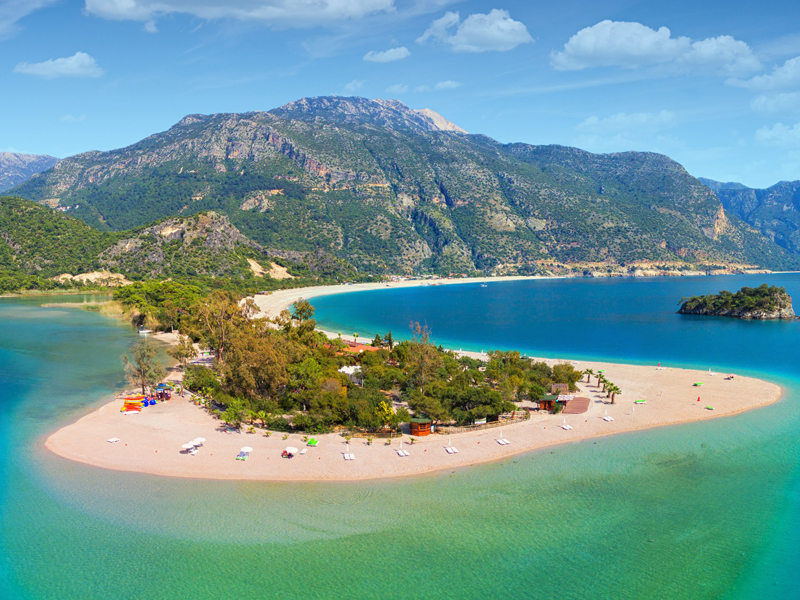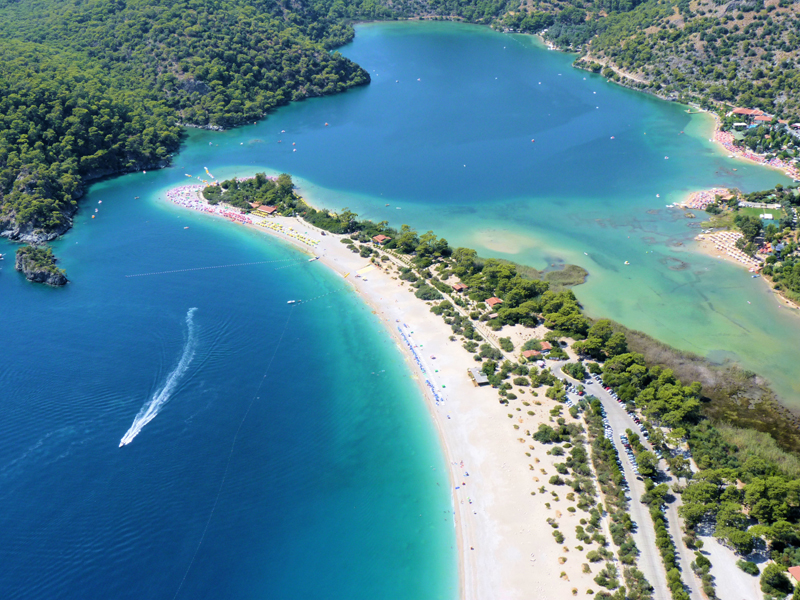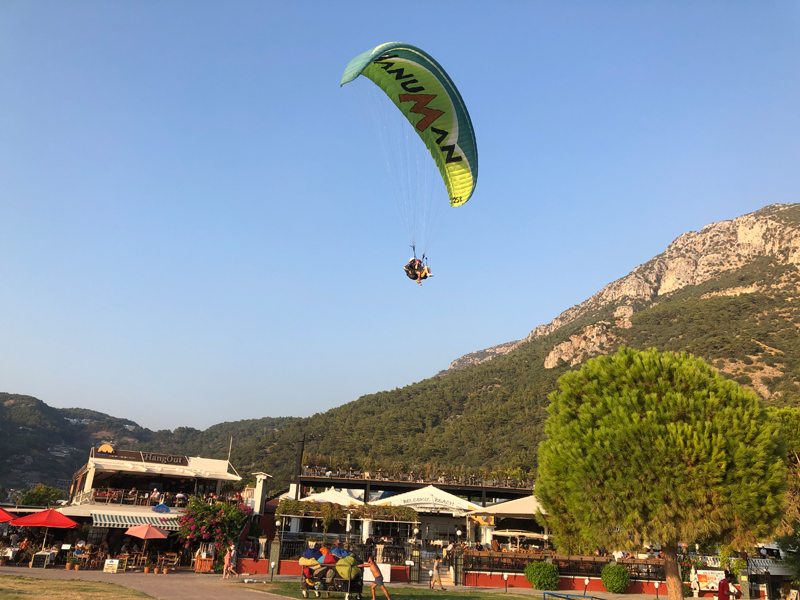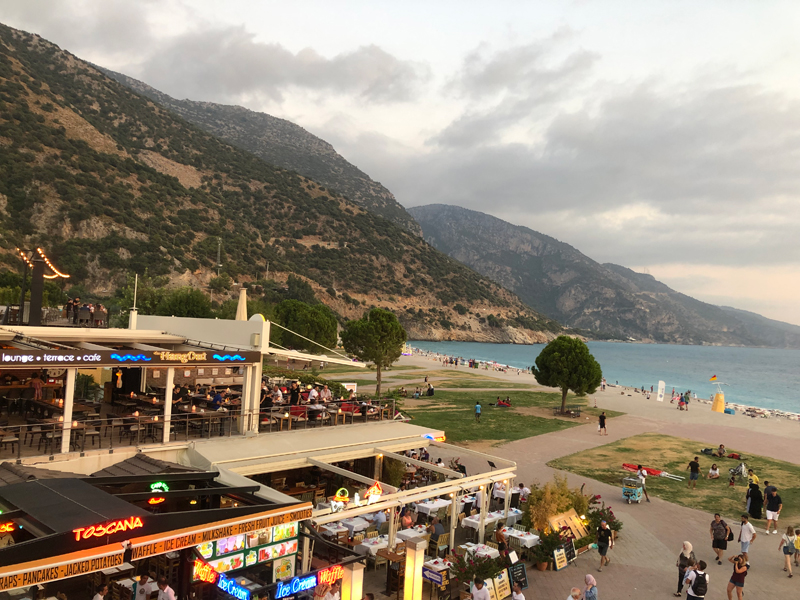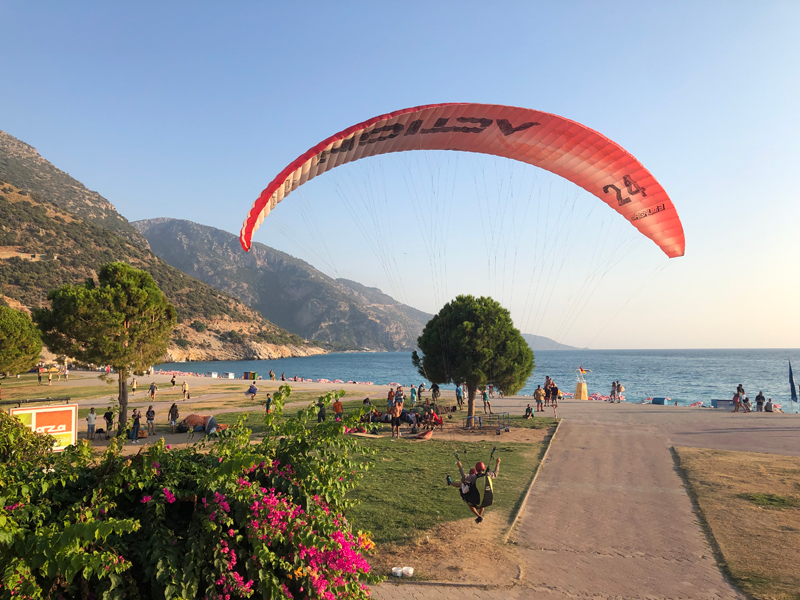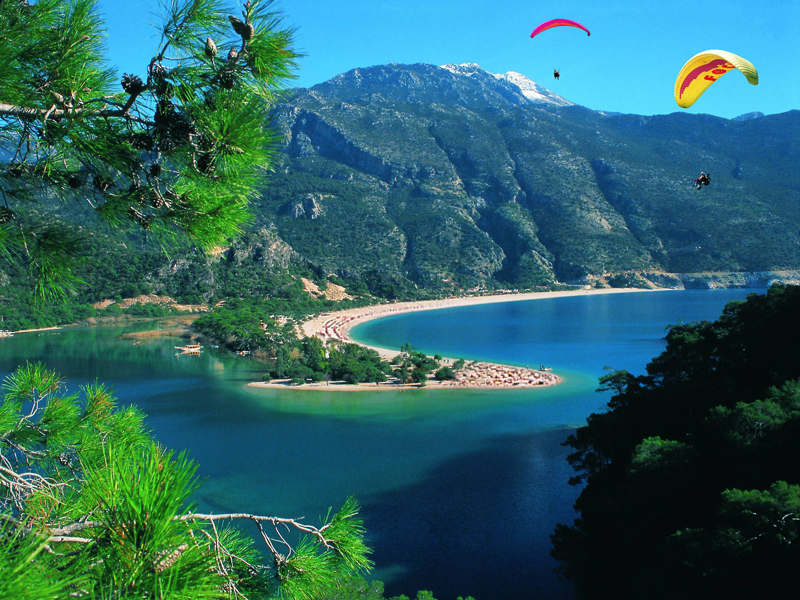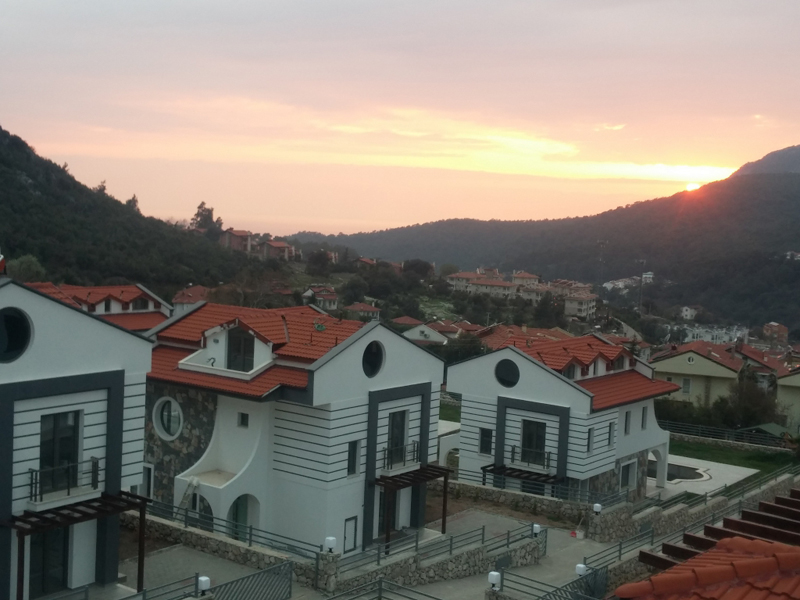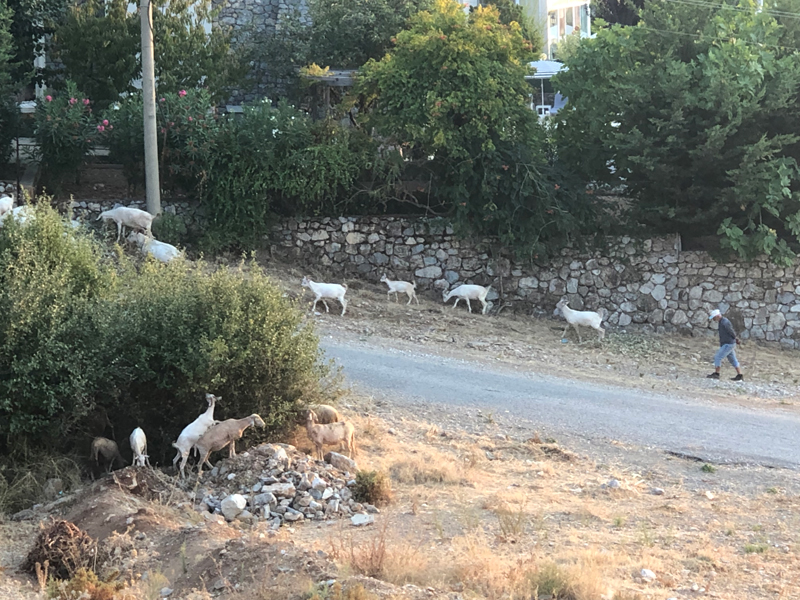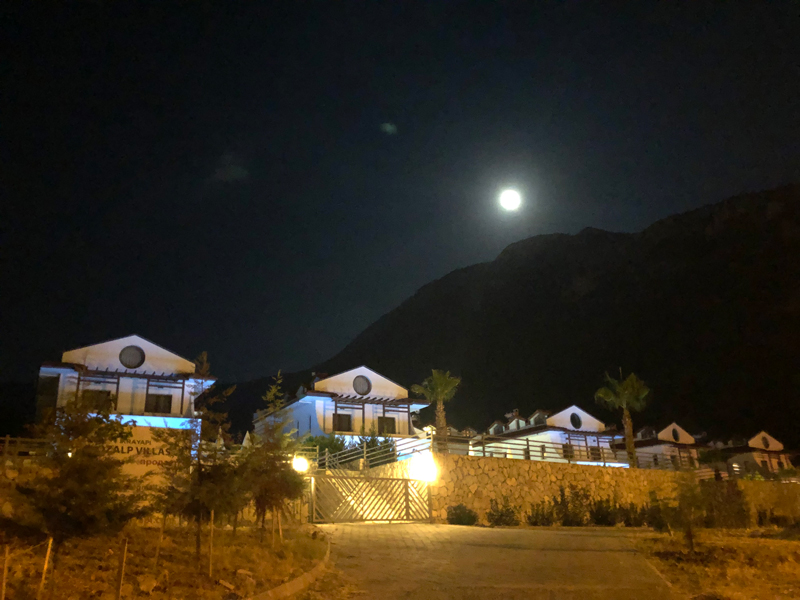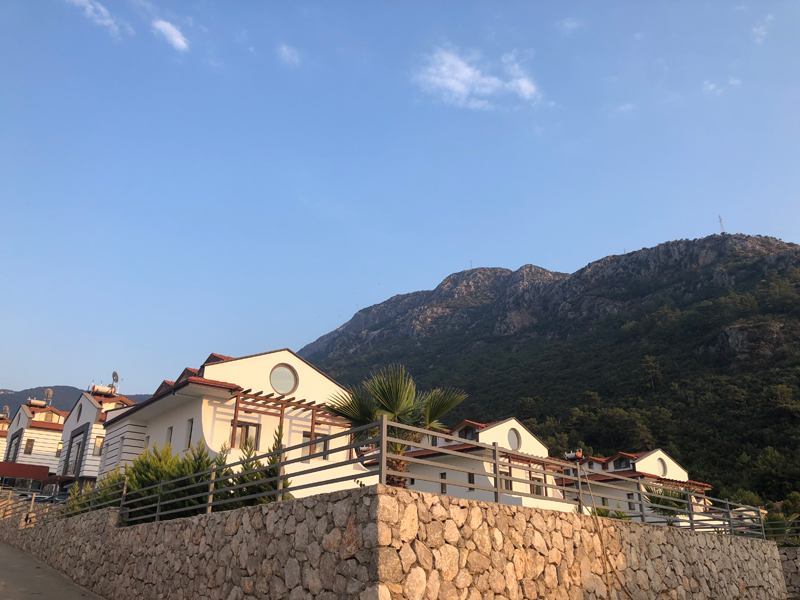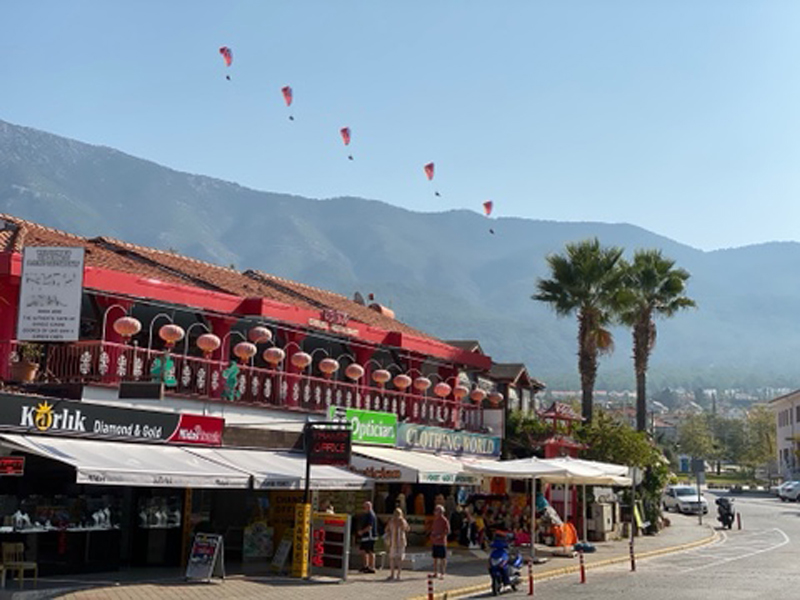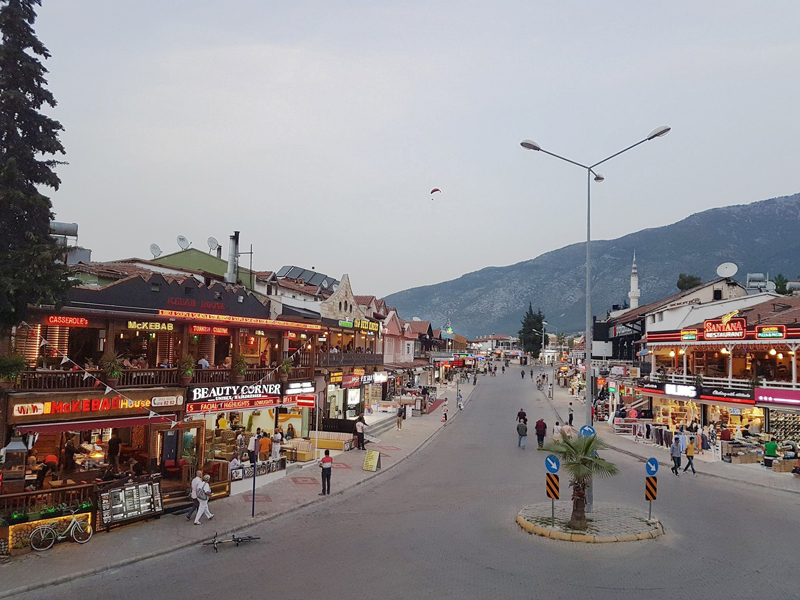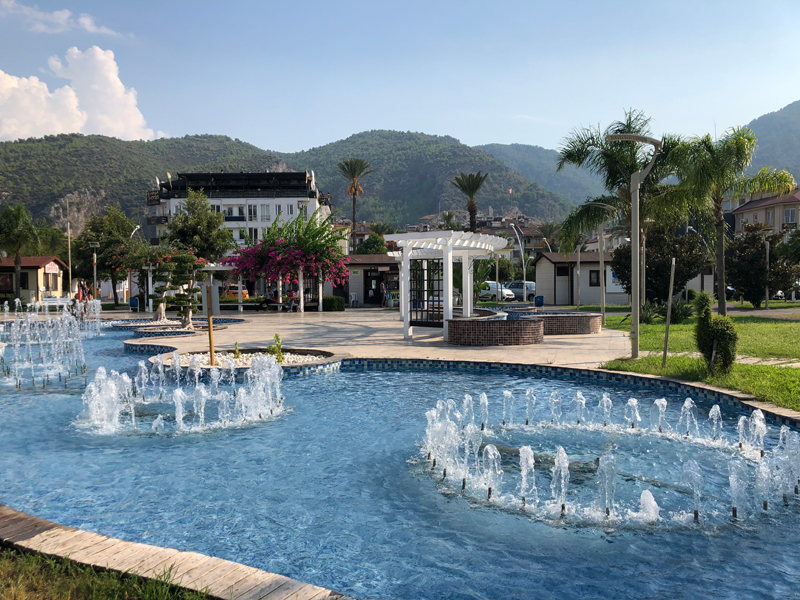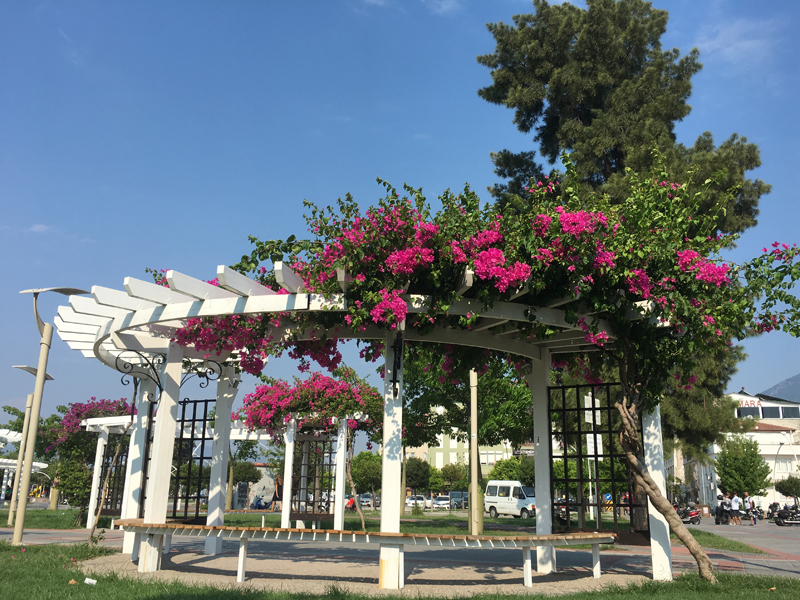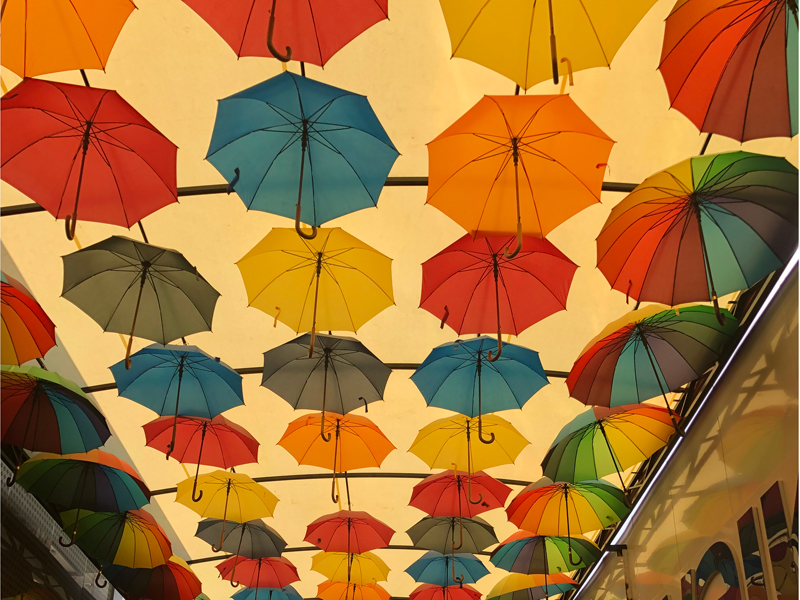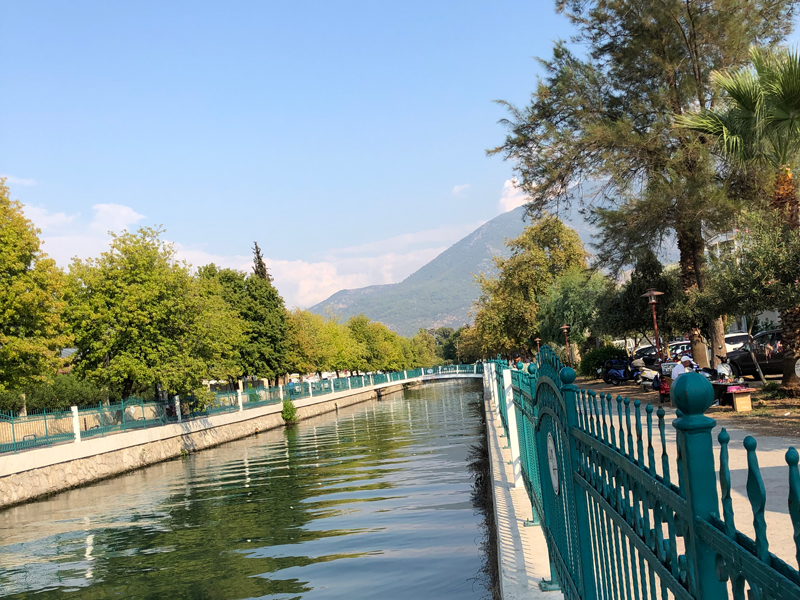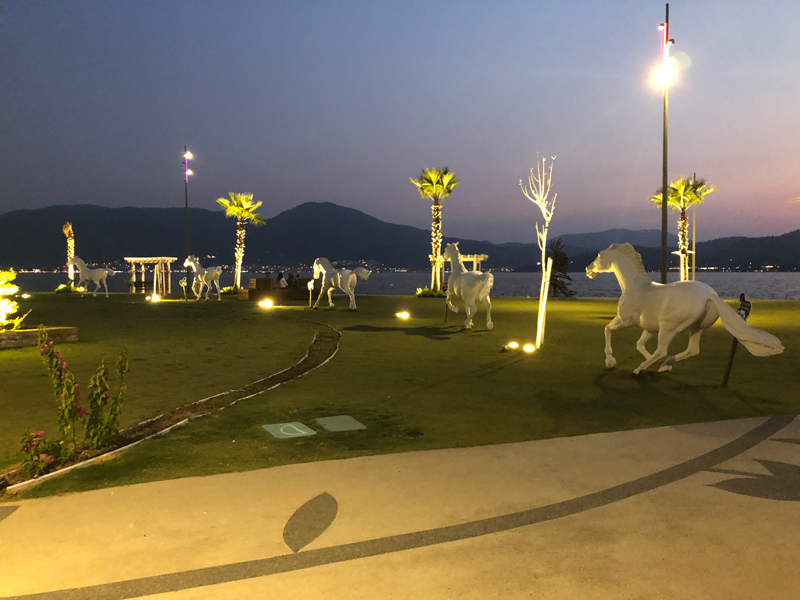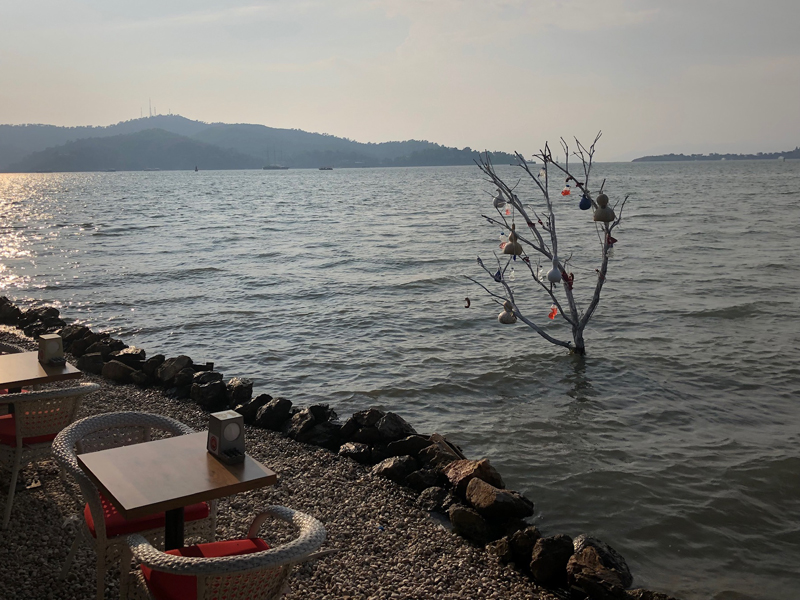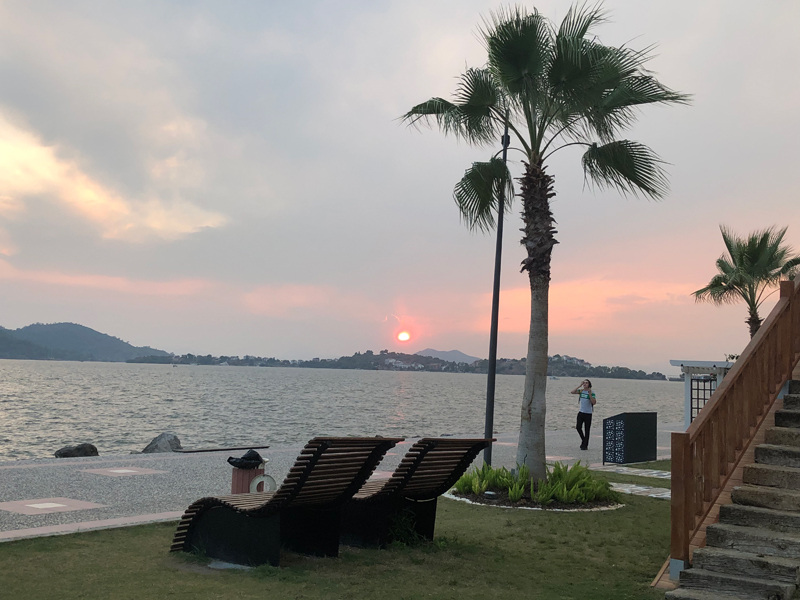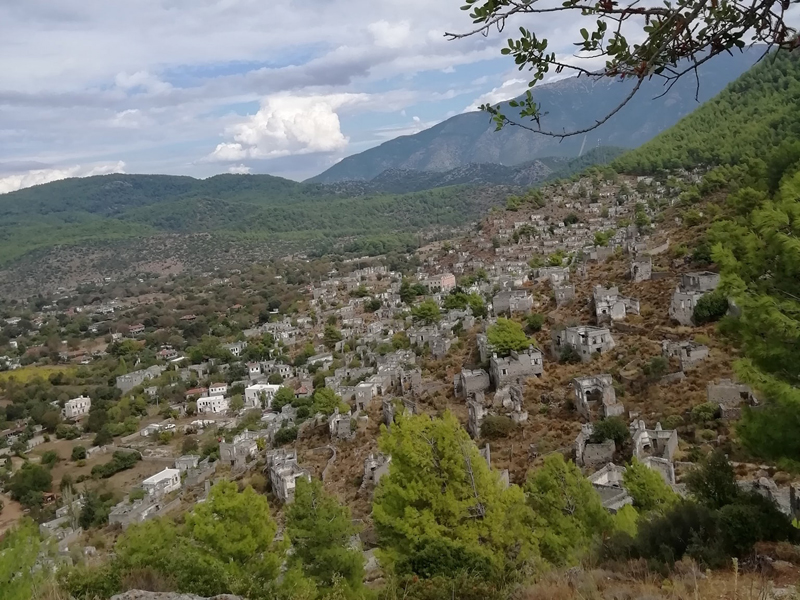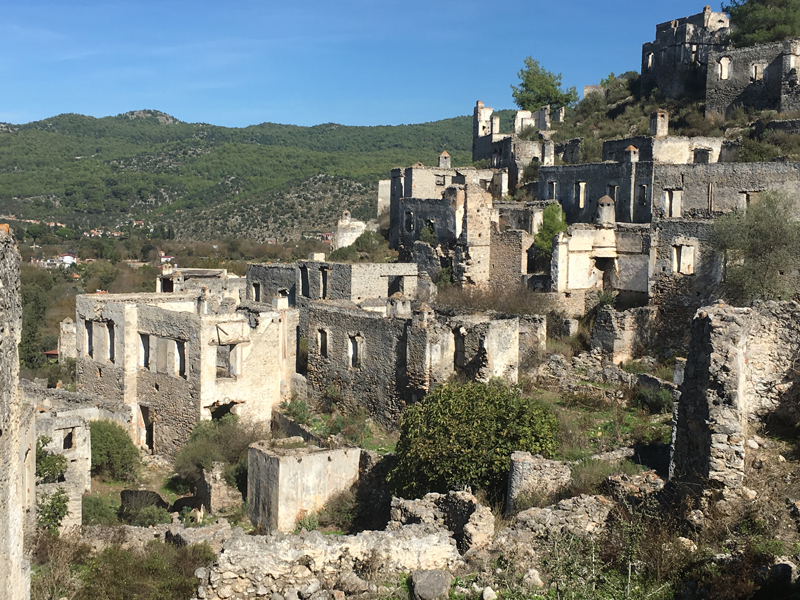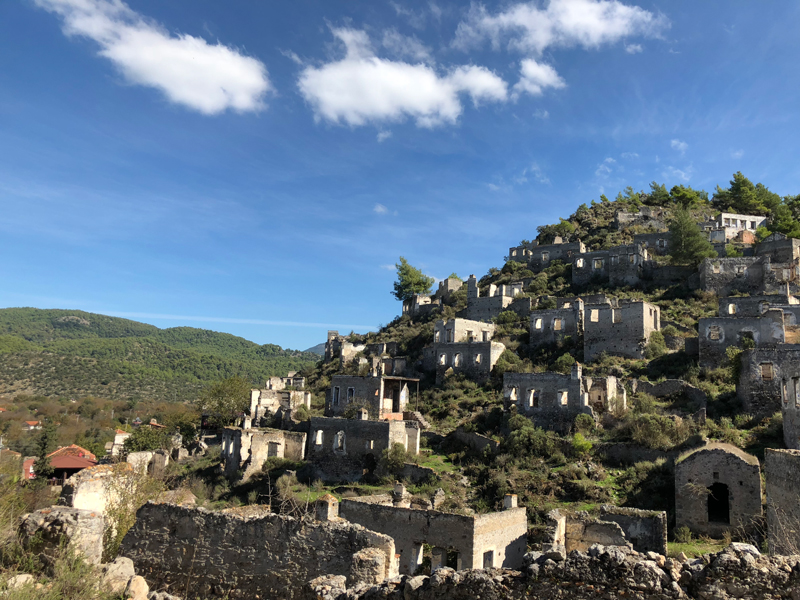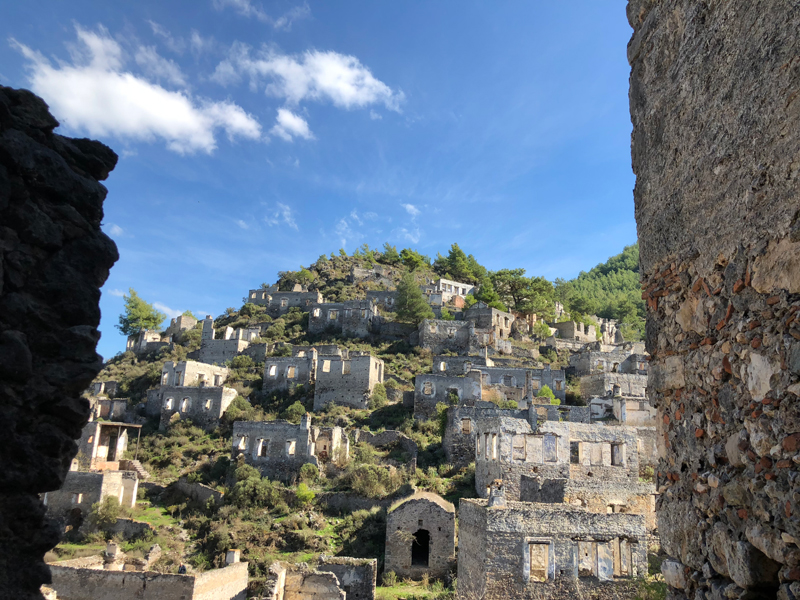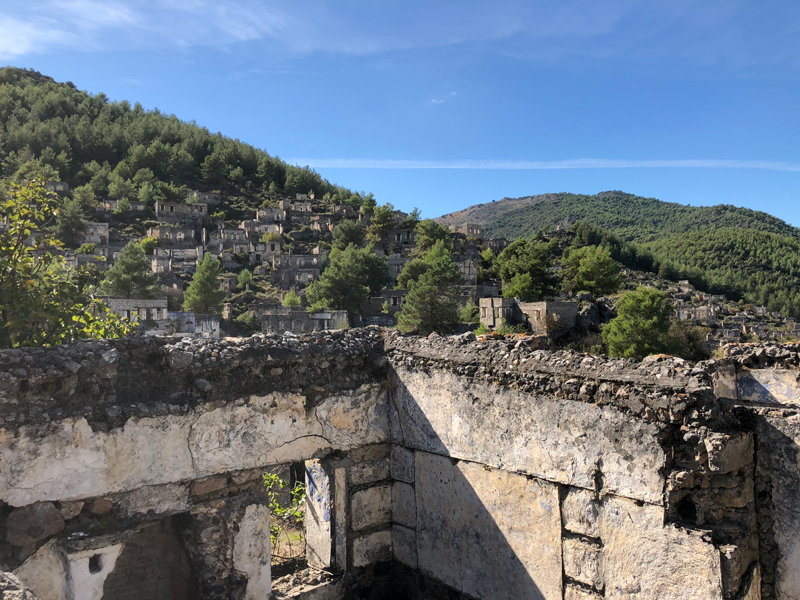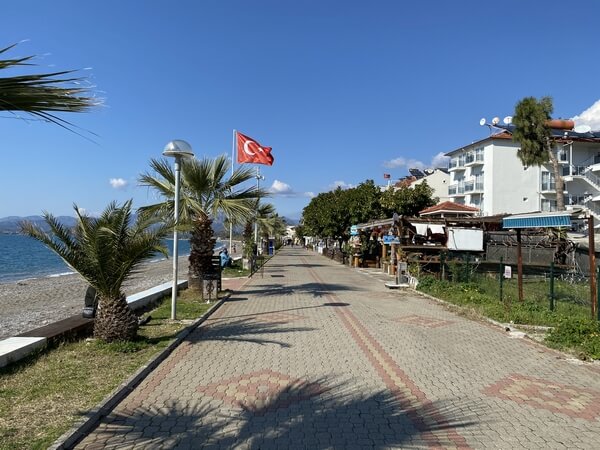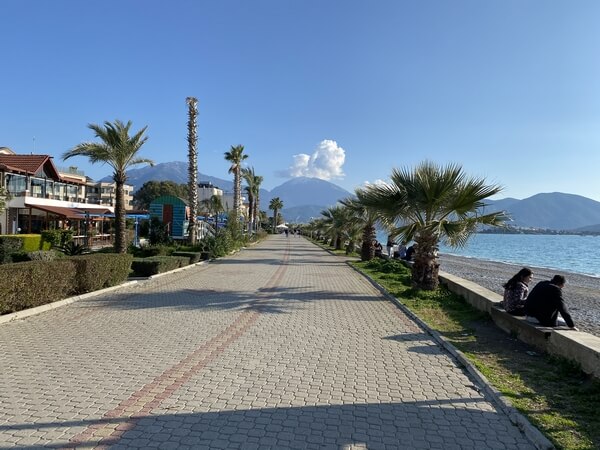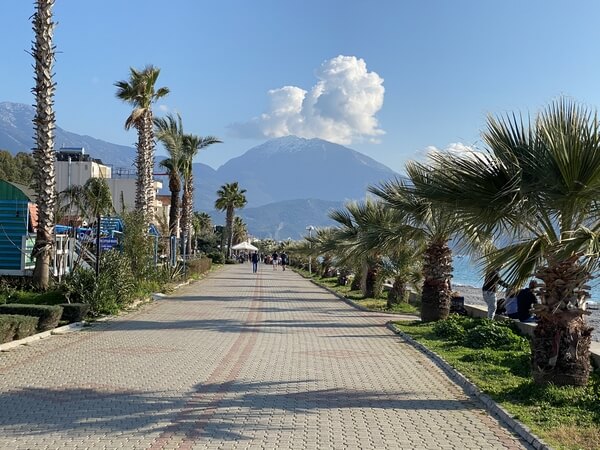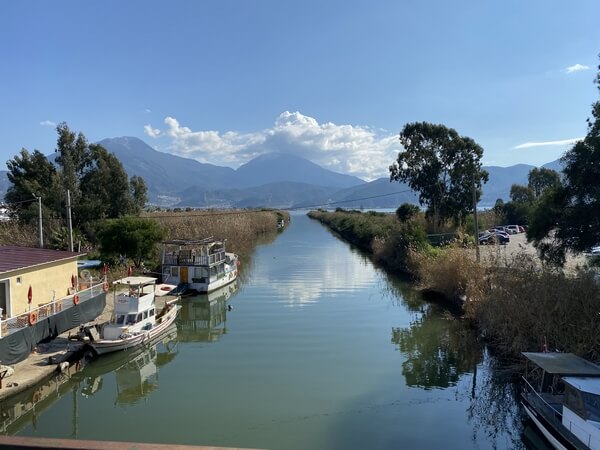The 6 towns in the Fethiye Region
The 6 towns in the Fethiye Region
Oludeniz
Ölüdeniz (literally Dead Sea, due to its calm; official translation name Blue Lagoon) is a small beach resort in Fethiye on the Turquoise Coast of southwestern Turkey and is at the base of Mount Babadag.
It has a sandy bay at the mouth of Ölüdeniz, on a blue lagoon. The beach itself is a pebble beach. The lagoon is a national nature reserve and is famous for its shades of turquoise and aquamarine, while its beach is an official Blue Flag beach.
Ölüdeniz offer a variety of diving opportunities with regard to its crystal clear waters and rich underwater caves and fauna making it ideal for Scuba diving and snorkelling.
Ölüdeniz is also famous for its paragliding. It is regarded as one of the best places in the world to paraglide due to its unique panoramic views, stable weather conditions, and Mount Babadag's exceptional height. Babadag (Father Mountain) towering above Oludeniz on the Southwest coast of Turkey is a geological marvel that just happens to make for incredible thermals and ideal conditions for paragliding flight.
Ovacik
Ovacik is a small village in Fethiye district on the Turkish Riviera that starts at the top of Oludeniz and wraps around Hisaronu to the top of the hill leading to Fethiye.
It is located mainly next to the residential neighbourhood and holiday resort of Hisarönü, which consists mainly of small hotels, and private villas. The village has restaurants and shops , and is generally quieter than Hisarönü.
Ovacik village is located on a small plateau at the foot of Babadag mountain (Turkish: father mountain) , the preferred spot for paragliders, near the blue lagoon of Ölüdeniz and Belcekiz beach.
The village is about 5 km away from Ölüdeniz, 9 km from Fethiye city center, and 100 km from the city of Mugla.
.
Hisaronu
Hisarönü is a tourist resort village in the Fethiye district of the Mugla Province of Turkey. It is situated at the western extreme of the Mediterranean coast of Turkey and the southern extreme of the Aegean coast. The resort has grown from a very basic village in 1990 to the large resort with its neighbor Ovacik since then. In 1992, the road through Hisaronu to Kayaköy was paved for the first time.
Hisaronu was originally intended to provide accommodation for nearby Ölüdeniz (where new building work is quite restricted), but Hisarönü has now become a holiday resort in its own right and is popular with British holidaymakers in particular.
Hisaronu has an abundance of gift shops, clothe shops, restaurants and bars as well as a few night clubs. In the peak months Hisaronu is a bustling resort.
Hisaronu is just a short walk from the villa which can be done inaround 7 to 8 minutes.
Fethiye
Fethiye is one of Turkey's well-known tourist centres and is especially popular during the summer.
In the last ten years Fethiye has become a magnet for British. Apart from its climate and natural beauty, the Britons are attracted by its less expensive lifestyle and the hospitality of the local people. The British population in Turkey is between 34,000 and 38,000. As a result of the large British population and the high numbers of Britons going there for holiday, Fethiye-Ölüdeniz was chosen as the best tourism centre in the world by The Times and The Guardian newspapers in 2007.Over 7,000 British citizens permanently live in Fethiye, while approximately 600,000 British tourists visit the town every summer.
The Fethiye Museum, which is very rich in ancient and more recent artifacts, displays and testifies to the successive chain of civilizations that existed in the area, starting with the ancient Lycians.
Fethiye is also home to the Tomb of Amyntas, a large and beautiful tomb built in 350 BC by the Lycians. What makes this tomb unique is its massive size and beautiful carvings.
Kayakoy
The deserted ruins of this once-bustling town are nestled against the Taurus Mountains, close to the world-famous beaches and yacht-filled harbour at Fethiye. Although the stone buildings are roofless and weathered and the narrow streets worn with age, this is not an ancient city, but a modern ruin deserted for political reasons in the 1920s.
The messy fallout of World War I and the collapse of the Ottoman Empire led to the land grabs of the Greco-Turkish War (1919-1922). The resounding loss of the Greeks in this war lead to the Greeks fleeing Turkey.
In Kayakoy, approximately 350 homes now sit empty and mostly roofless, along with two Greek Orthodox churches and the fountains and cisterns that watered the city. Harsh winters and strong winds have stripped the buildings down to ruins, making the town look ancient. A private museum tells the story of the town.
Chalis
Calis, is actually pronounced Chalis , and Calis beach is actually more of an extension of Fethiye. It can be reached carrying along to the south side of Fethiye bay . The beach promenade is lined with gorgeous palm trees , and is filled with various restaurants, bars and shops . With it being completely flat , it is ideal for pushchairs and wheelchairs.
You can sit along the front , while away some time with lovely refreshments, and watch many a beautiful sunset , looking at the beauty of the Taurus mountains . The beach is a mixture of sand and pebbles depending on which part you stop at . Many water sorts are available in this area including surfing , water skiing and parasailing .

